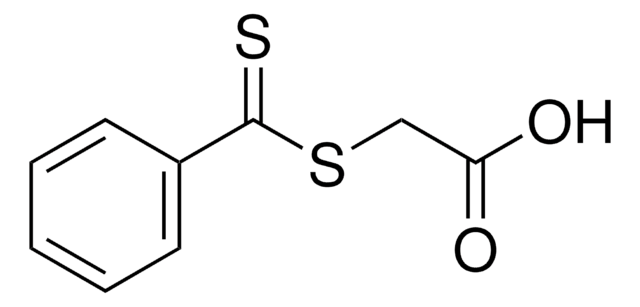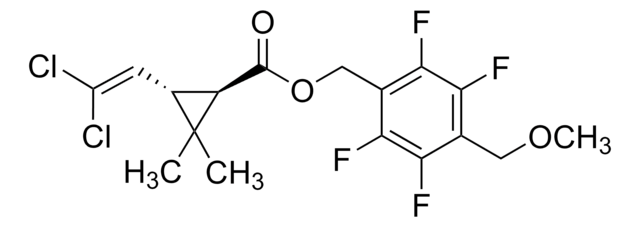528056
Thioglycolic acid
≥99%
Synonyme(s) :
Mercaptoacetic acid
About This Item
Produits recommandés
Densité de vapeur
3.2 (vs air)
Niveau de qualité
Pression de vapeur
0.4 mmHg ( 25 °C)
Pureté
≥99%
Température d'inflammation spontanée
662 °F
Disponibilité
available only in EU
Indice de réfraction
n20/D 1.505 (lit.)
Point d'ébullition
96 °C/5 mmHg (lit.)
Pf
−16 °C (lit.)
Densité
1.326 g/mL at 20 °C (lit.)
Température de stockage
2-8°C
Chaîne SMILES
OC(=O)CS
InChI
1S/C2H4O2S/c3-2(4)1-5/h5H,1H2,(H,3,4)
Clé InChI
CWERGRDVMFNCDR-UHFFFAOYSA-N
Vous recherchez des produits similaires ? Visite Guide de comparaison des produits
Application
- A sulfur source and stabilizing agent to synthesize nanocrystalline metal sulfides via hydrothermal reaction. TGA also controls the morphology and particle sizes of nanocrystalline metal sulfides during the process.
- An effective agglomeration suppressant for the agglomeration of sulfurized mineral pyrite.
- A reactant to prepare 2,3-disubstituted-thiazolidin-4-one derivatives by one-pot cyclo-condensation reaction with various aldehydes and amines using supported protic acid catalyst.
- A capping or stabilizing agent to synthesize CdTe quantum dots with controllable photoluminescence wavelengths.
Informations légales
Mention d'avertissement
Danger
Mentions de danger
Classification des risques
Acute Tox. 3 Dermal - Acute Tox. 3 Inhalation - Acute Tox. 3 Oral - Aquatic Chronic 3 - Eye Dam. 1 - Skin Corr. 1B - Skin Sens. 1B
Code de la classe de stockage
6.1C - Combustible acute toxic Cat.3 / toxic compounds or compounds which causing chronic effects
Classe de danger pour l'eau (WGK)
WGK 3
Point d'éclair (°F)
266.0 °F - closed cup
Point d'éclair (°C)
130 °C - closed cup
Équipement de protection individuelle
Faceshields, Gloves, Goggles, type ABEK (EN14387) respirator filter
Faites votre choix parmi les versions les plus récentes :
Déjà en possession de ce produit ?
Retrouvez la documentation relative aux produits que vous avez récemment achetés dans la Bibliothèque de documents.
Les clients ont également consulté
Notre équipe de scientifiques dispose d'une expérience dans tous les secteurs de la recherche, notamment en sciences de la vie, science des matériaux, synthèse chimique, chromatographie, analyse et dans de nombreux autres domaines..
Contacter notre Service technique













